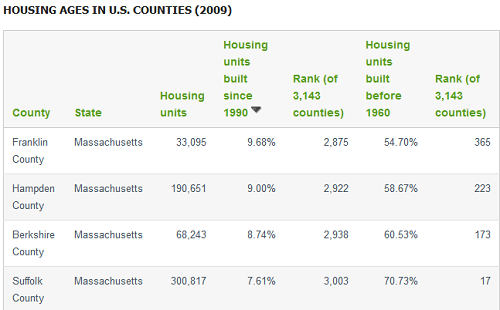Tight supply means rents soaring in city
Average of $1,881 is up 7% in a year
By Dan Adams
Globe Correspondent / August 14, 2012
Rents for apartments in Boston* are soaring, and a dearth of construction of less expensive apartments is making it increasingly difficult for tenants to find affordable places to live.
The average monthly rent jumped more than 7 percent to $1,881 in the past year, according to Rental Beast, a brokerage that follows the rental market in Boston neighborhoods. A two-bedroom apartment in the Back Bay now rents for $2,857 a month; in Jamaica Plain, for $1,536.
Things are not much cheaper regionwide, as monthly rents in Greater Boston out to Interstate 495 average $1,796, according* to Reis Inc., a New York data firm that ranks the Boston area as the fifth-most-expensive rental market in the country, after New York City and San Francisco.
“It’s been a complete turnaround,” said Cynthia Campobasso, who manages rental properties around Boston and used to dread departure notices from tenants. “Now when we get notices, we get excited, because it means we’ll get higher rent than we have in years.”
Even finding an apartment is getting tougher. The vacancy rate, already low last year at 3.8 percent, has dropped to 3.1 percent, said Rental Beast. In high-end neighborhoods such as the Back Bay and South End, barely 1 percent of apartments are vacant, making it nearly impossible to find rentals there.
Analysts and real estate brokers said high rents are in some ways the price of success: Boston is doing relatively well economically, and technology and biotech companies have increasingly moved to or expanded in downtown districts, drawing employees who want to live near work.
“The rental market is as strong as it’s been in 10 years,” said Ishay Grinberg, president of Rental Beast. “Is it more expensive? Yes. Is it a pain to find an apartment? Yes. Those are the negatives. But all in all, people still really want to be in these areas, and that cannot in any way, shape, or form be a negative.”
Another big factor driving rents up is the large number of young professionals who are still leery of the somewhat soft housing market and are choosing to rent rather than buy. Empty nesters are also relocating in great numbers from the suburbs to Boston, and college students continue to migrate to Boston, with many colleges and universities reporting higher enrollment, particularly among graduate students, who are less likely to live on campus.
Boston officials said they have permitted construction of 3,256 apartments so far this year in central neighborhoods such as the Back Bay, Fenway, and the Seaport District, where rent pressures are at their most extreme, and another 1,077 affordable units citywide for lower-income tenants. The city has numerous other initiatives that encourage developers to build or preserve subsidized housing, especially for populations like the elderly.
Moreover, over the past two years the Boston Redevelopment Authority has approved about 7,000 apartments and condominiums, though many are still in the development or construction phase. Spokeswoman Susan Elsbree said Boston is suffering from a classic situation of demand outstripping supply. “We have to create supply on every spectrum to decrease the cost overall,” she said.
But many of the new market-rate units have been high-end apartments in the city’s more expensive neighborhoods — downtown and the waterfront, for example — that end up reinforcing higher rents throughout the market.
“There’s not a lot of new inventory coming in, and what does tends to be more luxury-type buildings that address the needs of older empty nesters,” Grinberg said. “There are very few affordable units coming onto the market.”
Some renters are finding, to their frustration, that the only available apartments are the dregs of the market.
“These places were absolutely disgusting,” said Erinn Gloster, a 28-year-old paralegal who has been looking for an apartment since May. “Some places I didn’t want to step foot in the kitchen or bathroom.”
The market has become so tight that Mayor Thomas M. Menino has asked developers to propose novel approaches to providing “worker” housing — units that middle-income tenants can afford to rent, that is.
Among the most novel responses has been so-called micro-housing: tiny, sub-studio-size apartments that have room for little more than a galley kitchen, bathroom, sleeping area, and chair. The units, some as small as 350 square feet, are mostly being built in the emerging Seaport District and will rent from $1,200 to $1,600 a month.
The higher rents add fuel to a long-running debate over whether the region’s housing is just too expensive — for renters as well as the businesses that depend on them.
“If I have to spend 40 or even 50 percent of my household income on rent, that means I’m going to spend less on restaurants, less on clothing, less at malls, less on everything else,” said Barry Bluestone, director of the Dukakis Center for Urban and Regional Policy at Northeastern University.
Bluestone said cities and towns need to aggressively encourage the construction of affordable housing by, for example, eliminating minimum lot sizes and easing restrictions on multi-unit buildings.
For some renters, Boston has gotten to be too much.
David Mailloux, 37, until recently a patient advocate at a health clinic, had been renting in Boston for most of his adult life. But a vacation earlier this year in Madison, Wis., turned into a relocation, once he saw what $800 a month got him: a two-bedroom 15 minutes from downtown.
“I grew up here, but you have to move on,” he said. “No one in their 30s wants to move home because they can’t afford to rent.” He was unable to find a one-bedroom or studio apartment for under $1,000 near Boston. “If rents keep going up, you’re going have to be some superstar lawyer or businessman to afford a decent place in Boston.”




